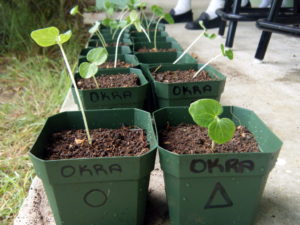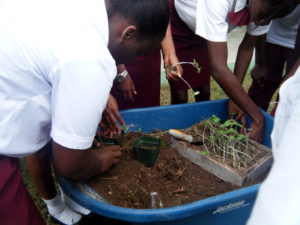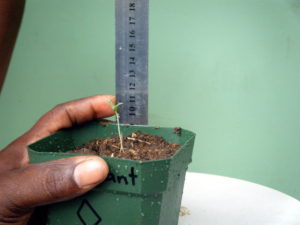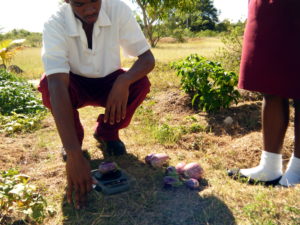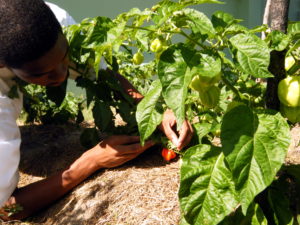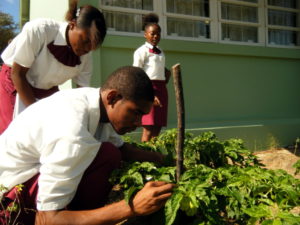Preliminary Effects of Montserrat Volcanic Ash on Barbuda Limestone Soils
Mr. John Mussington's secondary school class
Sir McChesney George Secondary School
Barbuda
Grades 9-12

Sep-Dec

Garden
Abstract
This project was conducted by the high school science class at Sir McChesney George Secondary School on the Caribbean island of Barbuda. The experiment explored the utilization of volcanic ash from Montserrat to remineralize the limestone soil in Barbuda to improve the soil fertility. Improving the soil fertility in Barbuda would hopefully revitalize the agriculture and economy of the island, while simultaneously giving Montserrat a market for the volcanic ash as a remineralization product for gardeners and farmers.
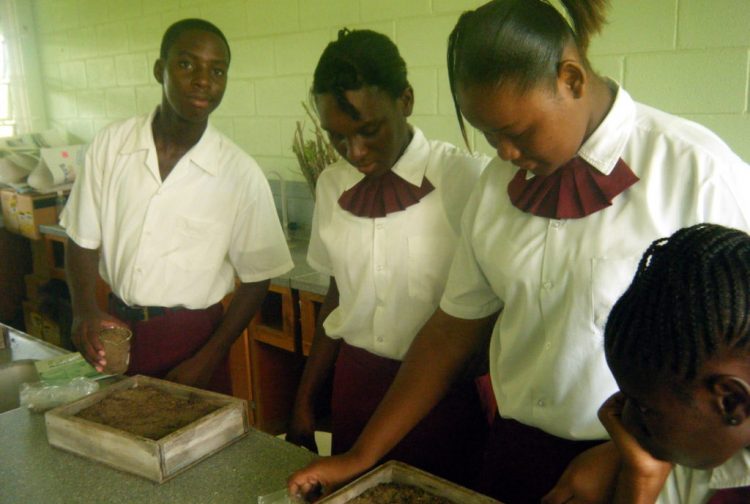
Introduction
Barbuda is the 62 mi2 sister island of the two island states of Antigua and Barbuda. It is a flat coral limestone island with its highest point being just about 130 feet. The nature of its limestone terrain makes it unsuitable for intensive-type agriculture.
Montserrat lies about 32 miles south of Antigua and Barbuda. Its challenge has to do with trying to live with an active volcano that erupted in 1995, burying a significant proportion of the island under volcanic ash and forcing two-thirds of the population to flee. Finding ways to make the Montserrat community sustainable is a major concern.
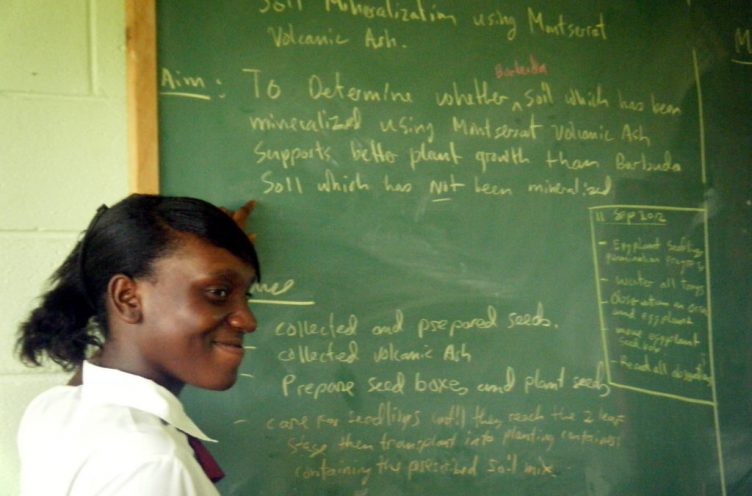
Materials and Methods
First, gather seeds of whatever plant is being tested and plant them into individual seed boxes. Once the seeds germinate, select 20 of the strongest of each plant to be tested. Transplant them all into pots. Set aside 10 as a control group with only local soil. For the remaining 10 use a mixture of local soil and volcanic ash in a 1:5 ratio, if there is not enough volcanic ash drop down to a 1:9 ratio. Record daily height measurements for the first 6 weeks. Transplant them into planting beds for the next phase of data collection. Record qualitative observations such as plant vigor, flowering, yield, and timing of fruit ripening.
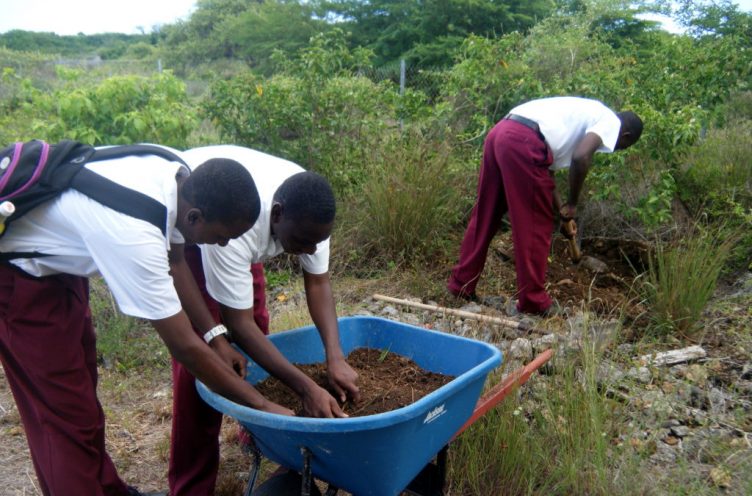
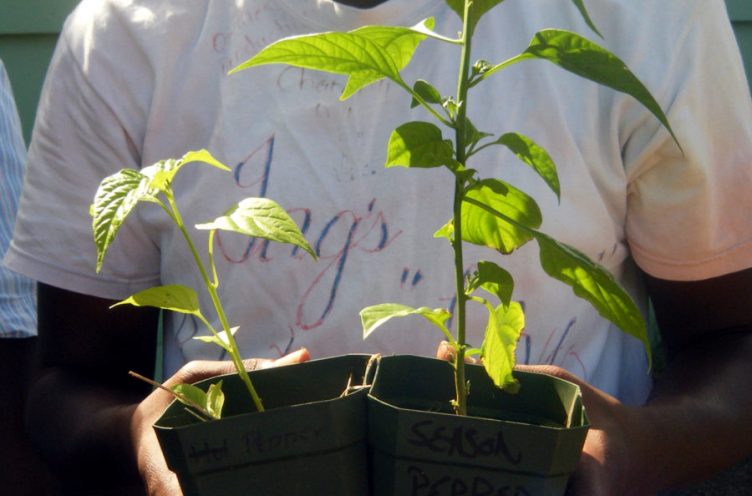
Results
The data recorded daily on heights was inconclusive, but at the end of the 3 months the pepper plants grown with the Montserrat ash were significantly taller than the control group (shown in the fifth image). The eggplants in the experimental group flowered significantly sooner than the control group. They also produced a greater yield with bigger eggplants. The hot peppers and seasonal peppers also showed a sizable increase in yield and fruit size. Both kinds of peppers in the experimental groups also flowered before their respective control groups. The okra unfortunately became pot bound and did not survive. In general, volcanic ash was shown to increase the soil fertility.
Implications
With the exception of the okra, the experiment was a success. It proved that the Montserrat ash did in fact increase the soil fertility of the Barbudan limestone soil. It successfully increased yields, produced larger fruits, and helped the plants flower quicker.
Acknowledgement
Dr. Tom Goreau, Advisor
Mr. John Mussington, Principal and Science Teacher
Photos and Videos
